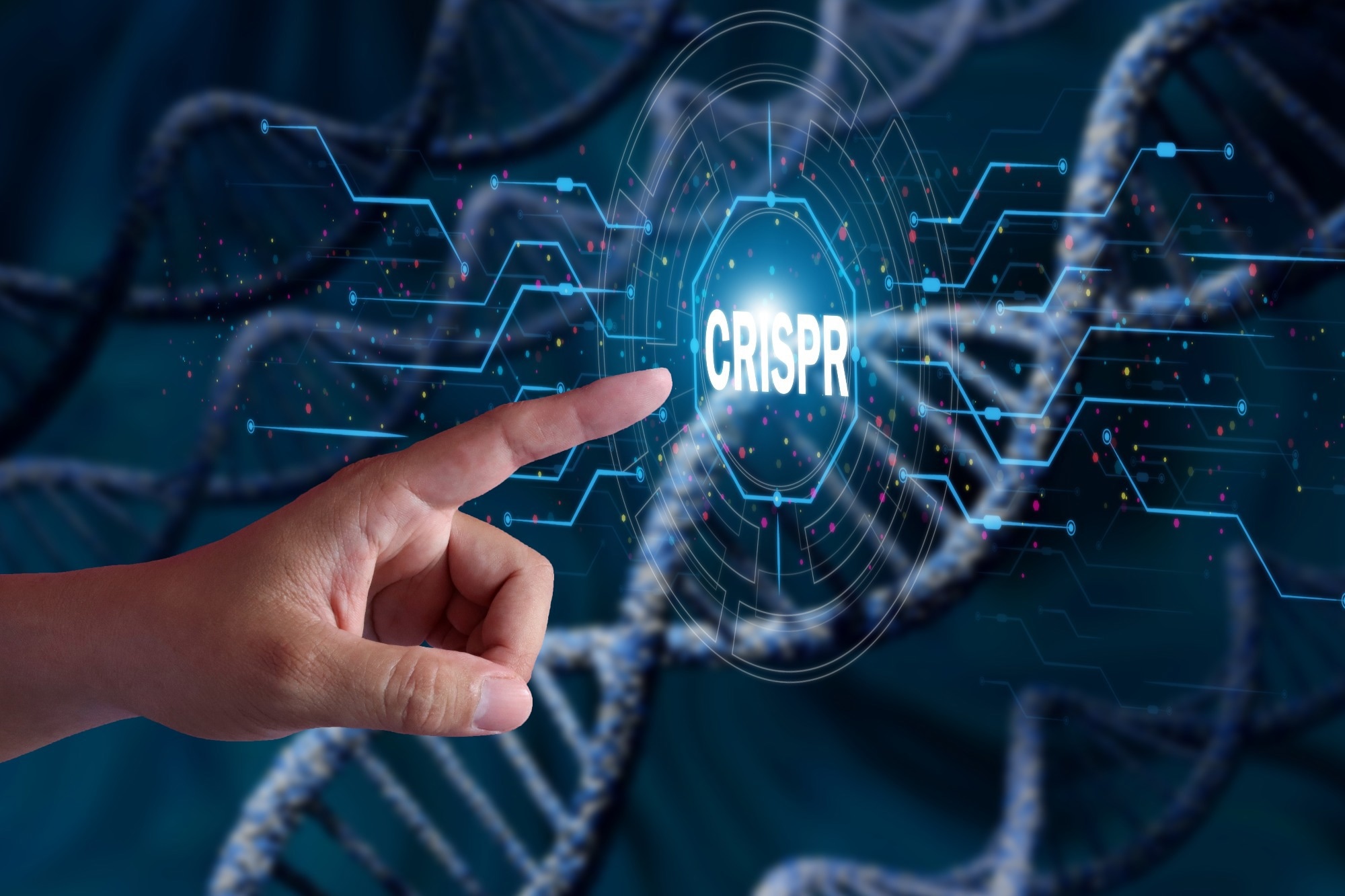Although the invention of clustered regularly interspaced short palindromic repeats (CRISPR)-CRISPR-associated protein 9 (Cas9) gene-editing technology using CRISPR and (CRISPR-Cas9) has revolutionized cell and genetic therapy and discovery biology, studies have found that the introduction of targeted mutations using CRISPR-Cas9 can sometimes cause unintended structural changes.
In a recent study published in Nature Genetics, researchers used a phenomics approach to study proximity bias and the unrelated chromosomal truncations that occurred when CRISPR-Cas9 was used in knockout experiments targeting over 17,000 genes in primary human cells.
 Study: High-resolution genome-wide mapping of chromosome-arm-scale truncations induced by CRISPR–Cas9 editing. Image Credit: Gohang/Shutterstock.com
Study: High-resolution genome-wide mapping of chromosome-arm-scale truncations induced by CRISPR–Cas9 editing. Image Credit: Gohang/Shutterstock.com
Background
The CRISPR-Cas9 system has been widely used for gene editing, and its applications range from in vivo editing for discovery biology and genetic therapies to ex vivo applications for cell therapy.
The Cas9 system's specificity and scalability give it an advantage over other gene editing technologies, such as small interfering ribonucleic acids (RNA) and zinc finger nucleases.
However, the CRISPR-Cas9 system has been reported to have unrelated and undesired off- and on-target changes and activity, such as chromosome truncation, and deletions at kilobase scales.
Although detecting and profiling these undesired effects are essential to the development of effective therapies, existing sequencing-based molecular methods are expensive and laborious.
Phenomics, or the profiling of cellular morphology, can help generate single-cell molecular data that is highly dimensional and more affordable than single-cell RNA sequencing and other molecular methods, which can be applied to study these undesired effects.
About the study
In the present study, the researchers used the phenomics approach to systematically create a profile of primary human cell knockouts using the CRISPR-Cas9 system. They targeted 17,065 genes and created a gene vector for the phenotype of each manipulated gene using fluorescent images of cells encoded using a deep-learning model.
Pairwise measurements of similarity in the phenotypes of knockouts were conducted using cosine similarity to determine novel biological relationships such as annotated pathways and protein complexes, as well as large- and small-molecule and genetic changes.
Human umbilical vein endothelial cells were used to create knockouts using the CRISPR-Cas9 system, and the process involved over 100,000 guides, at the rate of six guides for each gene.
A complementary similarity map was generated to validate the phenomics data, with key differences between the knockout dataset (rxrx3) and the complementary dataset (cpg0016) involving delivery protocols for Cas9 or the guide, cell types, and gene sets.
The changes in cellular morphology were examined further by evaluating the ability of both datasets to recapitulate targeted and broadly known biological processes. The genome-wide dataset was then visualized to examine the proximity bias the researchers had observed between knockouts of genes that had genomic proximity.
The researchers then used the nonparametric Brunner-Munzel test to quantify the proximity bias by estimating cosine similarity probability for within-arm versus between-arm relationships for each chromosome arm.
The Brunner-Munzel probabilities at the gene level were plotted against the chromosome arm position to quantify whether the genes closer to centromeres showed a stronger proximity bias.
To test whether CRISPR-Cas9-based editing caused the deletions of multiple genes, the researchers used two single-cell RNA sequencing datasets from melanoma-derived melanocytes and a human leukemia monocytic cell line to quantify the truncations in chromosome arms.
Major findings
The study found that CRISPR-Cas9-based gene knockouts caused a proximity bias where the knockouts showed unexpected phenotypic similarities with proximal, unrelated genes on the same chromosomal arm. Furthermore, this phenomenon was found to be nuclease activity-dependent and consistent across different cell types, laboratories, and mechanisms of Cas9 delivery.
Large-scale variations in chromosomal structure were also observed between original chromosome structures and reference genomes based on proximity bias patterns.
The transcriptomic data from single cells and bulk sequencing indicate that chromosomal truncations drive these variations in chromosome structure.
Based on the findings, the researchers hypothesized that a chromosome arm correction where the vector representation is corrected by deleting the estimated chromosome arm representation could reduce the proximity bias.
The results found that these changes did indeed lower the proximity bias effect for each arm while improving the benchmarking metrics for the entire genome and conserving the biological relationships.
Conclusions
The study explored the unintended phenotypic effects of structural changes introduced by CRISPR-Cas9-based targeted mutagenesis using a phenomics approach involving knockout experiments targeting over 17,000 genes.
The findings revealed a proximity bias, in which the knockouts are more similar to unrelated genes located on the same chromosomal arm. The effect was consistent across cell types, Cas9 delivery protocols, and laboratories.
However, the researchers also proposed a strategy to correct proximity bias where the removal of a confounding signal for chromosomal arm representation lowers the proximity bias while retaining the biological relationships.
Journal reference:
-
Lazar, N. H., Celik, S., Chen, L., Fay, M. M., Irish, J. C., Jensen, J., Tillinghast, C. A., Urbanik, J., Bone, W. P., Gibson, C. C., & Haque, I. S. (2024). High-resolution genome-wide mapping of chromosome-arm-scale truncations induced by CRISPR–Cas9 editing. Nature Genetics. doi:https://doi.org/10.1038/s4158802401758y, https://www.nature.com/articles/s41588-024-01758-y